Historic preservationists face new challenges as sea-level rise threatens Butler Island
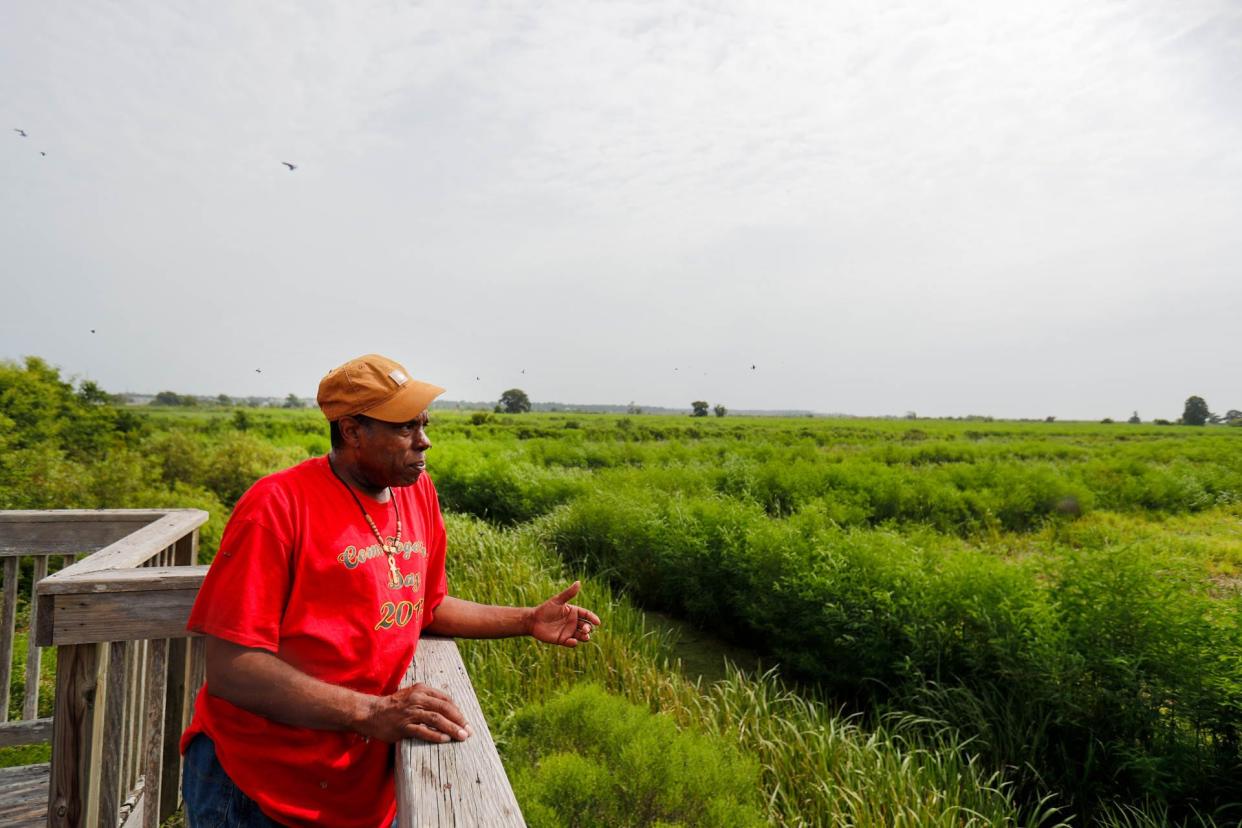
This article is part of a USA TODAY Network reporting project called "Perilous Course," a collaborative examination of how people up and down the East Coast are grappling with the climate crisis. Journalists from more than 35 newsrooms from New Hampshire to Florida are speaking with regular people about real-life impacts, digging into the science and investigating government response, or lack of it.
George "G.W." Moore stands at the top of a raised platform overlooking the waving, grassy fields that were the veins of Butler Island's rice plantation years ago. He barely flinches at the hundreds of lovebugs swarming in the air, flittery hallmarks of the south Georgia summer.
Butler's history isn't ancient; while the plantation stopped producing rice, the land was farmed for other crops like cabbage into the 1940s.
"My dad used to walk these levies with another guy that was an overseer when they did cabbage," Moore said. His great-grandma lived for many years (to 103) to tell generations of Moore's family about her experiences working as a house lady.
Climate Change: Urban heat islands roast Savannah each summer. What can be done to stop it?
And: We created scorching 'heat islands' in East Coast cities. Now they're becoming unlivable
The shadow lines from the island's agricultural era still show through the long, marshy grass. Moore said he feels a strong connection with the land because of his family history.
"We are trying to instill (pride) in the younger generation," Moore said. "They really don't know that they have something that is special, so much history still in the community, rich in Darien."
That same day, about a mile from the overlook, the Rev. Bill Barton unlocks the door to the Huston House that overlooks the remnants of a rice plantation on the edge of Butler Island.
The Colonial-style, white home has breathed in the coastal humidity for nearly 100 years. It's now empty except for the hundreds of wasps building their nests into its tall entryway, swarming the wood above the steep, uneven brick steps.
Barton, an Episcopal rector, and his peers at the Coalition to Save Butler Island have fought years of political battles to save the island from sale, development and historical erasure. None of those wins are sure to spare it from the rising tide.
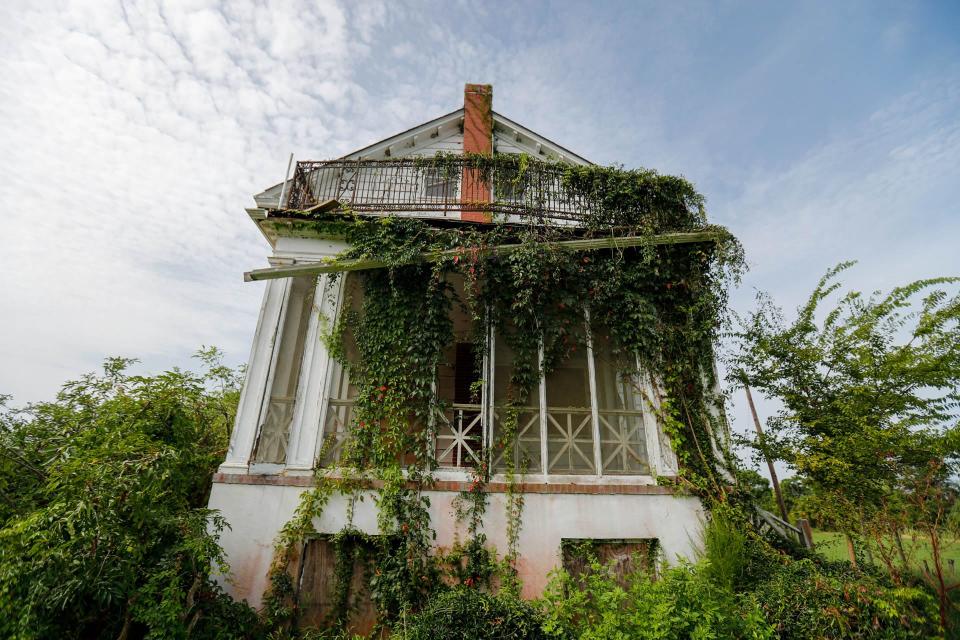
"People speak often about how climate change, sea-level rise is going to flood this property," Barton said. "It's incorrect. The property is already flooded. The property is already underwater."
If the Coalition and its partners do nothing in the next few years, Barton said, historical preservation work on the island won't matter in the face of climate change.
The Savannah Morning News visited Butler Island as part of a USA TODAY Network reporting project called "Perilous Course," a collaborative examination of how people up and down the East Coast are grappling with the climate crisis. Journalists from more than 35 newsrooms from New Hampshire to Florida spoke with people about real-life impacts, digging into the science and investigating government response, or lack of it.
Rising tides, eroding history
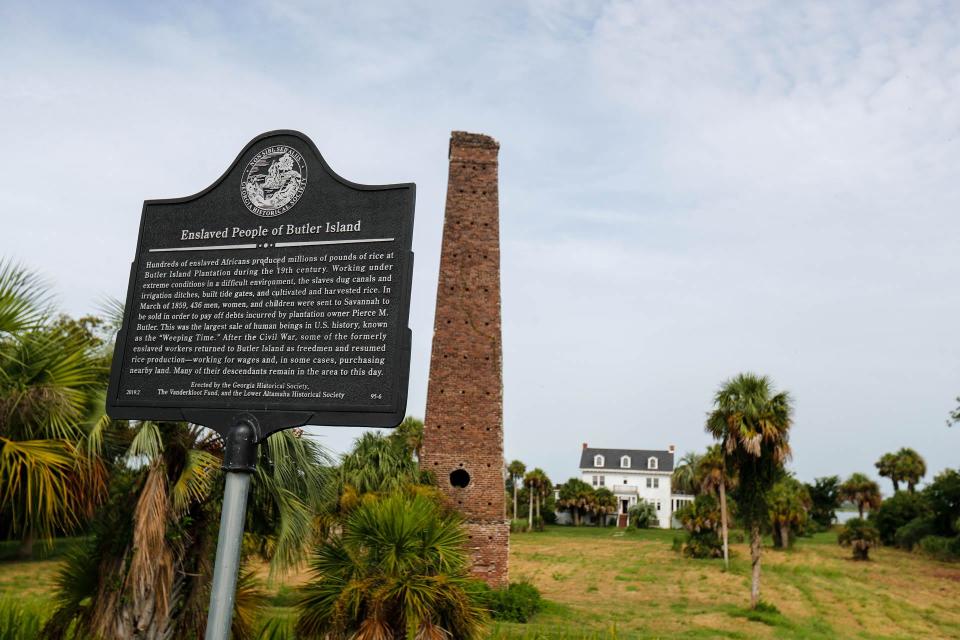
Sea-level rise may hit 14 inches along the East Coast by 2050, according to the National Oceanic Atmospheric Administration. The current average high tide on Butler Island inundates a majority of the land already. Should the water rise by a foot, nearly all of the island's high points will be submerged.
Rising tides and frequent floods continually threaten Butler Island. But the land knows water.
The island's edges are defined by the Altamaha River to its south and the Butler River to its north, on their way to the Atlantic miles downstream. Butler Island's rice plantation leveraged the tides to deluge the rice fields.
The house standing on the property now was built in 1927 by Col. T.L. Huston, a former co-owner of the New York Yankees. The plantation's roots date over a hundred years earlier to the late 18th century. Major Pierce Butler — a slaveholder and officer in the Revolutionary War — owned a rice plantation that covered about one-tenth of the island.
About an hour north, signs dot yards in west Savannah to note the location of "The Weeping Time," the largest recorded sale of enslaved people in U.S. history. It took place in March 1859 on the Ten Broeck Race Course to pay off the gambling debts of the major's grandson and namesake.
"Most people aren't aware that most of [the enslaved] came from the Butler Plantation," said Griffin Lotson, a direct descendent of Butler Island enslaved people, a Darien city councilman and vice chairman of the Federal Government Gullah Geechee Cultural Heritage Commission.
This history — of the working enslaved Black people and their descendants — is what Lotson and his peers want to preserve.
The trustees sold off the house and 429 of the 436 advertised enslaved men, women and children to recoup Butler's losses and ensure the family's future wealth. Ultimately, Butler gained $303,850 from the sale. That's equivalent to about $11 million today, according to an online inflation calculator.
A symbolic goal, a real challenge
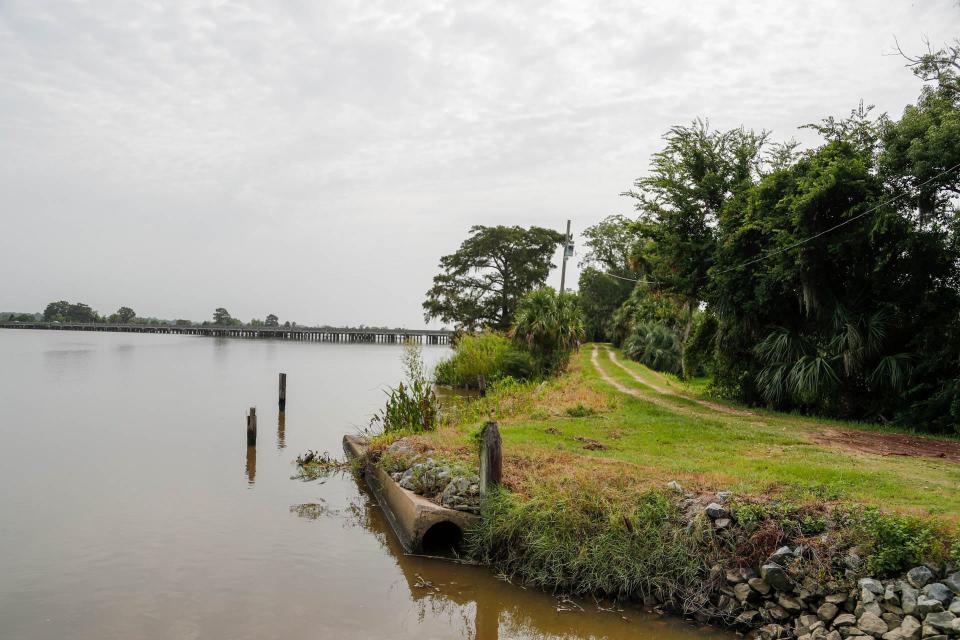
In 2018, House Bill 906 proposed to change the state's Heritage Trust Program, allowing the Georgia Department of Natural Resources to sell historical properties to private owners since the DNR financially struggled to afford historical landmark maintenance on top of land management.
DNR considered selling the 15-acre Butler Island property to a distillery for $1. The Huston House, the mill chimney, the land that contains the graves of enslaved people and other historical remnants, would all be up for grabs.
Lotson and others in Darien formed the Coalition to Save Butler Island, an organization aimed at revitalizing the historic site for common use.
"Some of your naysayers, your critics, say, 'We just need to leave that history alone,'" Lotson said. "If you're a historian like I am, you love all history; the bad history and the good history."
And that history is still slow to be embraced on the island. Lotson said that until 2019, when the Georgia Historical Society updated signs, not a single historical marker on Butler Island mentioned the enslaved people or their contributions.
Preservation on the island, for him, is about maintaining and sharing the real history of Butler Island, not just the "sweeteners" of that history like "Gone with The Wind" references and visits from Babe Ruth, who famously stayed at the Huston House.
Lotson has what he calls a symbolic goal: to raise $303,850, the equivalent of what Butler made from the sale of enslaved people and the land.
"We know it's going to take more money than that (to refurbish the property), but at least symbolically those enslaved individuals, my ancestors, will be free again because someone raised that kind of money specifically for where they used to live," Lotson said.
After sustained public outrage, the DNR withdrew support of the bill, as did several lawmakers who'd earlier supported it, including Savannah state Rep. Jesse Petrea, who announced in June of 2020, "The bottom line is, the language is no good. It needed to die. It's dead." The action to kill the bill left the Coalition to Save Butler Island triumphant and ready to renovate.
Now, though, they must somehow fight back against the rising floods swallowing the island.
Fighting water with water
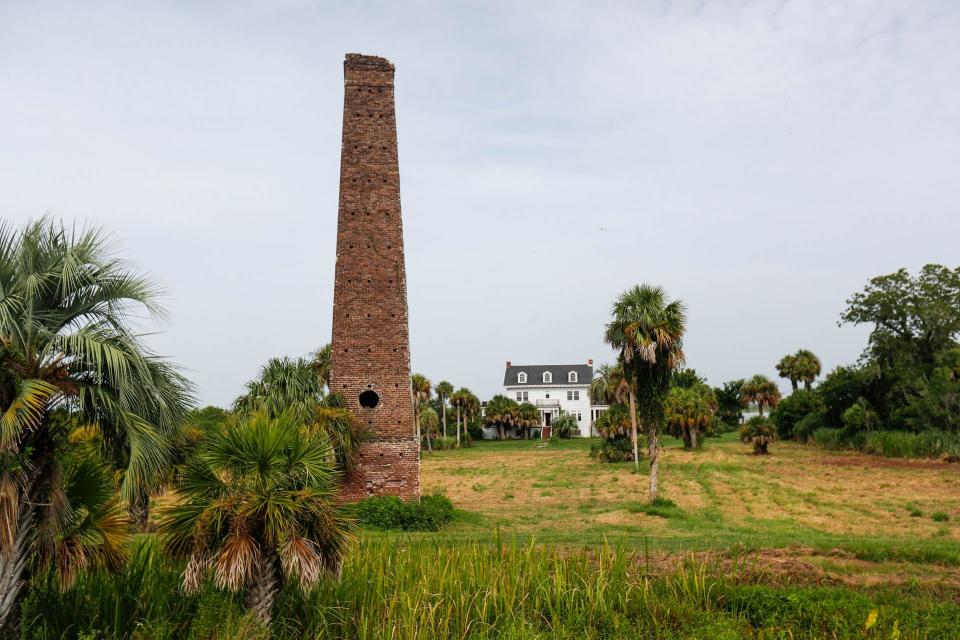
Looking across the tall grasses of the island today, the ordered and linear footprints of the old rice field dikes are still visible. That system of dikes and levees flooded the rice fields routinely while the area was an active rice plantation.
Now, those levees and dikes are tools DNR uses to keep the rising tide at bay.
An understated raised earthen bank divides the Altamaha from the inland. But the rise of the river overcomes this buffer multiple times a year, according to Barton. He said an engineering analysis by contractors found that the levees and dikes need to be raised by at least 2 feet in the coming years.
Robert Horan is a senior wildlife biologist working on Butler Island. Part of his daily work on the island is creating a flood.
Stemming Emissions: How the Inflation Reduction Act's climate change provisions may impact Georgia emissions
How will sea level increase high tide flooding? Feds warn levels are 'nearing the brim.'
“Currently, we do have flooding on a daily basis twice a day," Horan said. "It's a tidal flooding, and the tidal amplitude changes based on a multitude of factors. That depends on river flow and moon cycle, and sea-level rise is only one of the factors we're dealing with."
The system has had some updates since the 1700s: the DNR uses farm tractors and bulldozers to replenish the earthen berm, while the tide gates have been renovated over the years. Counterintuitively, flooding is important to prevent erosion of the earthen walls that have been built to protect the island. Horan said managing the flooding so that the water is moving equally fast on both sides of the wall is important to decreasing erosion and keeping the barriers healthy for longer.
Replenishing the dikes is a Sisyphean task DNR undertakes about every three years. As weather and water wears down the walls keeping the Altamaha River at bay, DNR must go back and pack more earth on top. The dikes stand around 4 feet above the high tide. Horan said if you imagine the dikes around New Orleans, Butler Island has the same system at a much smaller scale.
If the water comes up half a foot from sea-level elevation in the next decades, Horan said the system is prepared. But if it rises closer to 3 feet in the next 30 years, he said the infrastructure will be too low to maintain the water levels and the island will flood.
Why preserve Georgia's Butler Island?
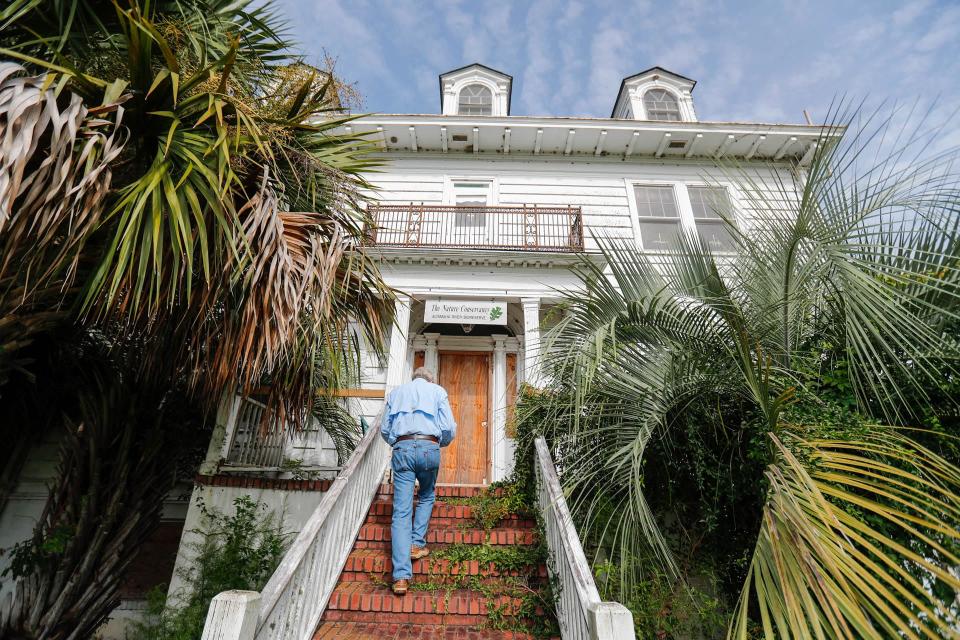
"The importance for me, as a descendant of Butler, is to preserve (the island) because that's where my ancestors were enslaved before," Tiffany Young said.
Fifteen years ago, Young started conducting tours on the island and genealogical research. In the future, she said she'd like to see more support from the community and the opportunity to manage the space how they see fit.
Others like G.W. Moore said they like to spend time in the nature of Butler Island, taking in the landscape. He hopes that young people are able to learn about the past from the island.
Moore has a sense of pride in the skills of his ancestors. Enslavers weren't the ones who built the riches of rice plantations, he said. Enslaved people were the engineers who knew how to let water into the fields and understood how the moon worked with the tides.
"My family, most of them were builders, some tailors. My grandfather was a tailor," Moore said. "Everything they were they brought over; they brought all of that."
— Marisa Mecke is an environmental journalist. She can be reached at mmecke@gannett.com or (912) 328-4411.
This article originally appeared on Savannah Morning News: Climate change: Sea-level rise threatens to swallow Butler Island

